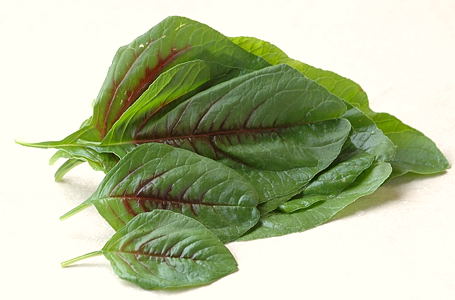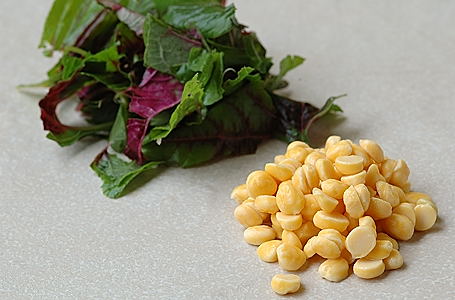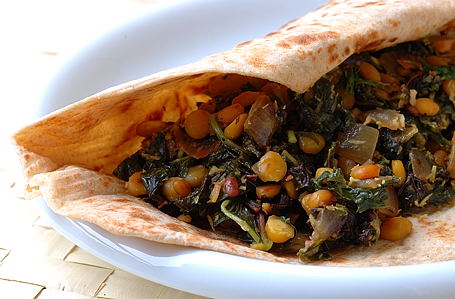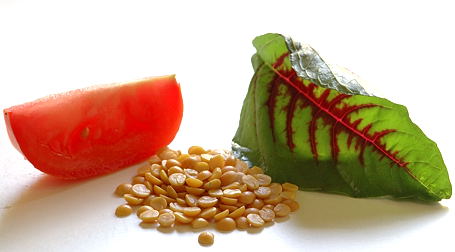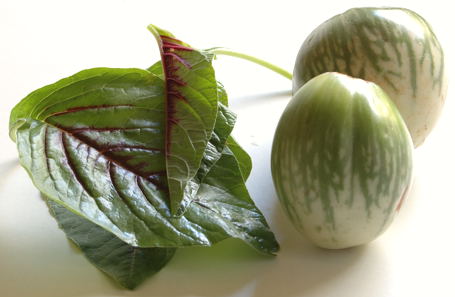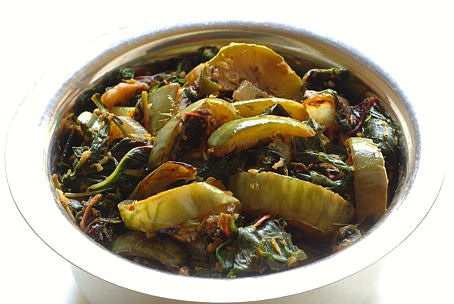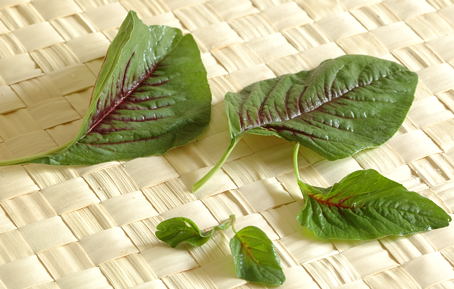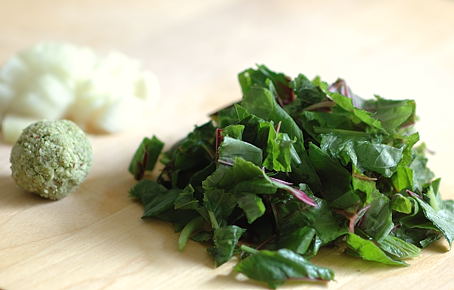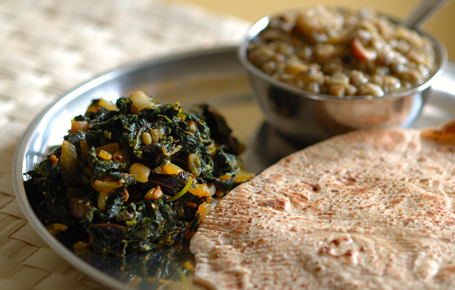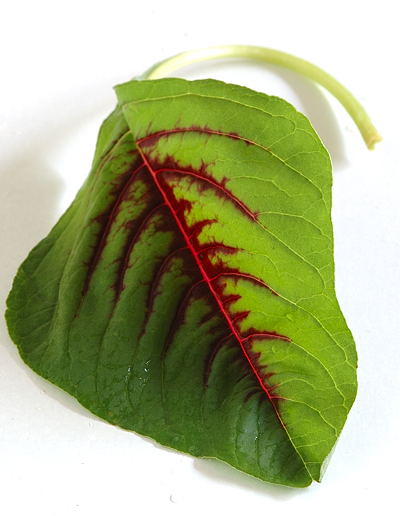Thotakura Palakura Tomato Kura:
The summer season for vegetables is coming into full swing here in Seattle. It’s overwhelming to see so many American as well as Asian vegetable varieties and it is getting impossible not to lose mind and money. The choice is endless and I love to be greedy. But, how many and how much one can buy, cook and eat? So, I am trying very hard to keep my cool at farmers’ markets and pick only the ingredients I’ve known from my childhood days that speak to my heart.
One fresh vegetable that I am enjoying to the fullest along with green brinjals is fresh amaranth. (Thotakura in Telugu). The label at the local farmers’ market says Chinese spinach or red spinach and one bunch is usually priced at one dollar. I have been buying this vegetable almost every week since May simply because I love the fresh amaranth taste. It is one of those “looks simple and yet yields results far outweighing the effort” kind of vegetable. In today’s recipe, another Nandyala classic, the fresh amaranth is paired with spinach and tomatoes. A stellar combination and a scrumptious curry!
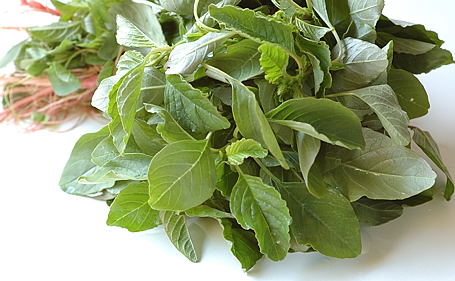
Bunch of Fresh Chinese Spinach/Red Spinach/Amaranth/Thotakura ~ From Local Farmers Market
Recipe:
1 teaspoon peanut oil
¼ teaspoon each -cumin, mustard seeds and curry leaves
1 big onion – finely sliced, about one cup
2 tomatoes – finely chopped, about one cup
5 green chillies -finely chopped
1 teaspoon – ginger garlic paste
½ tsp each- turmeric and salt
1 bunch fresh amaranth (leaves and tender stems) – finely chopped, about 5 cups
1 bunch fresh spinach – finely chopped, about 5 cups
I have also added about ½ cup chori/adzuki beans (pre soaked in water overnight). This is my choice and optional. Chickpeas, kala chana etc also taste good.
Heat peanut oil in a wide skillet. Add cumin, mustard seeds and curry leaves and let them sizzle a moment before adding the sliced onion, tomato, green chillies and red beans. Also stir in the ginger-garlic paste, turmeric and salt.
Let everything stew together for about 10 to 15 minutes, stirring occasionally, until the whole thing comes together into cooked soft mass with tender chori (adzuki) beans.
Now add the fresh amaranth and spinach. Stir to mix and cook covered on medium-high for about five minutes until the leaves wilt. Remove the lid and cook another five minutes. Turn off the heat. Let the curry sit for few minutes so that the flavors could mix well.
Serve the curry warm with chapatis or sorghum roti and a cup of yogurt plus fresh fruit for a complete meal.
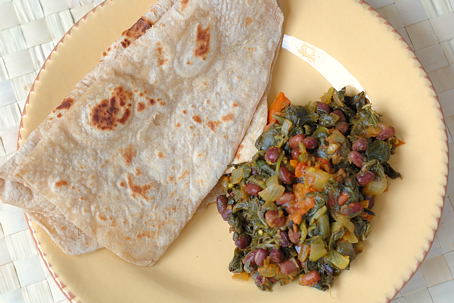
Chapatis with Fresh Amaranth-Spinach-Tomato Curry
